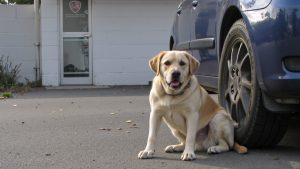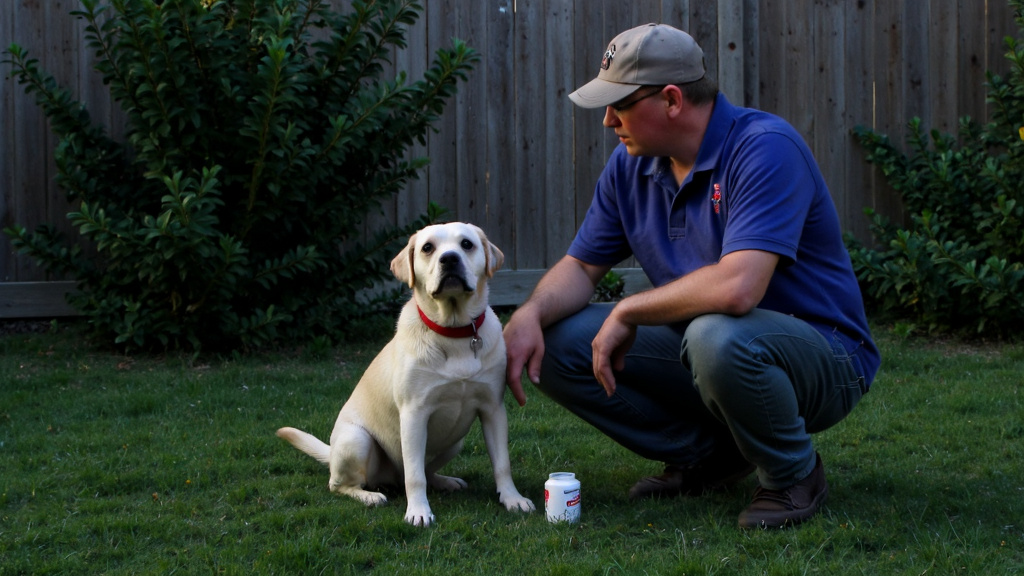
When your dog struggles with difficult, strained, or unsuccessful bowel movements, it signals constipation – a common digestive issue that can cause genuine discomfort and pain.
Healthy dogs typically defecate once or twice daily. When this pattern changes significantly, it indicates digestive system issues. A 2021 veterinary study revealed that nearly 8% of non-routine vet visits involve digestive problems, with constipation being a primary concern. While occasional constipation may resolve naturally, persistent cases often indicate underlying health conditions requiring attention.
As dog owners, understanding the signs of constipation can help avoid emergency vet visits and prevent unnecessary suffering. Knowing the difference between normal stool variations and problematic constipation enables you to determine whether simple dietary changes will suffice or if medical intervention is necessary.
What Are the Signs Your Dog Is Constipated?
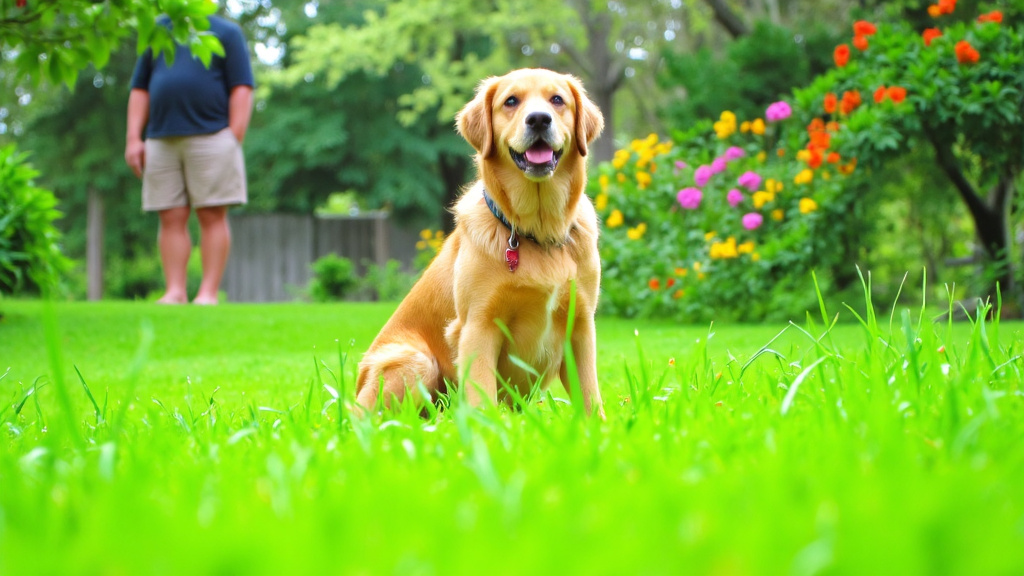
Standing outside waiting for your dog to do their business is a familiar scenario for every dog owner. When your dog struggles without success, it could signal constipation – a condition ranging from mild discomfort to severe pain. Recognizing early signs can help prevent distress for both you and your dog.
Primary Signs of Constipation
Watch for these key indicators during defecation attempts:
- Straining repeatedly with little or no stool produced
- Passing small amounts of hard, dry, pebble-like stool
- Having no bowel movements for 24-48 hours (though normal frequency varies by dog)
Behavioral Changes
Intestinal discomfort often manifests through behavioral changes:
- Excessive circling before attempting to defecate
- Scooting their bottom along the ground
- Crying out or whimpering during defecation attempts
- Frequently squatting with no results
- Adopting unusual postures when trying to defecate
Physical Symptoms
Constipation can affect your dog’s overall physical condition:
- Decreased appetite or complete food refusal
- Vomiting, especially if occurring repeatedly
- Lethargy and reluctance to exercise
- Tense, painful abdomen that causes discomfort when touched
- Visible discomfort when sitting or lying down
Timeline: When to Be Concerned
While normal bathroom habits vary based on diet, age, and individual factors, monitor these timeframes:
- 12-24 hours without defecation: Begin monitoring closely
- 24-48 hours without defecation: Cause for moderate concern, especially with other symptoms
- Over 48 hours without defecation: Requires veterinary attention
Most healthy dogs defecate between 1-3 times daily. Significant changes from your dog’s normal pattern deserve attention, especially when accompanied by straining and discomfort.
Less Obvious Warning Signs
Watch for these subtle indicators:
- Small amounts of liquid stool (can indicate that only liquid is able to pass around hardened stool)
- Mucus in stool or when attempting to defecate
- Reluctance to go for walks (possibly avoiding discomfort)
- Changes in water consumption
Note that these symptoms may also indicate other serious conditions. Always consult a veterinarian when your dog’s behavior significantly deviates from normal patterns.
What Causes Constipation in Dogs?
When your dog hasn’t had a bowel movement in days, it’s natural to worry. Constipation can range from a temporary inconvenience to a serious medical concern. Understanding the causes of your dog’s digestive troubles is essential for finding relief.
Dietary and Hydration Causes
Diet plays a crucial role in your dog’s digestive health. Many cases of constipation start with what goes into your dog’s bowl. Insufficient water intake is the most common culprit. Dogs need consistent hydration to maintain healthy digestion.
Sudden dietary changes can disrupt your dog’s system. Switching to premium food without a gradual transition can cause problems. Eating bones can create hard, dry stool that’s difficult to pass.
Physical and Behavioral Factors
Sedentary dogs often struggle with constipation. Regular exercise stimulates intestinal contractions that help move waste through the body. Without this stimulation, stool can become compacted.
Self-grooming, especially in long-haired breeds, can lead to hair accumulation in the digestive tract. This creates a trichobezoar (hairball) that blocks normal stool passage.
Dogs may develop anxiety about defecating in unfamiliar places. This behavioral constipation occurs when they hold their stool too long during travel or after moving.
Medical Conditions
Anal gland impaction creates pain during defecation, causing dogs to resist the urge. This creates a cycle where constipation worsens as dogs continue holding their stool.
Male dogs, particularly older ones, can develop constipation due to an enlarged prostate pressing against the rectum, making stool passage difficult.
Conditions like megacolon, where the colon becomes abnormally dilated and loses muscle tone, result in severe chronic constipation. This may progress from occasional issues to worsening symptoms as colon function deteriorates.
Foreign Objects and Obstructions
Dogs often eat things they shouldn’t. Socks, toys, rocks, and other objects can create blockages in the digestive tract. When Max the Labrador swallowed parts of a tennis ball, emergency surgery was required to remove the obstruction.
Tumors or masses in the colon, rectum, or surrounding tissues can physically block stool passage by narrowing the digestive pathway.
Age-Related and Structural Issues
Senior dogs face increased constipation risks due to weakening intestinal muscles and slower digestion. Many develop orthopedic conditions like arthritis that make defecation posture painful.
Previous pelvic injuries or abnormalities can permanently narrow the pelvic canal, creating a physical bottleneck for stool passage that may cause lifelong issues.
Medication Side Effects
Several common medications can cause constipation as a side effect. Antihistamines, opioid pain medications, diuretics, and certain antacids like sucralfate can slow intestinal motility. Discuss any new medications with your veterinarian if constipation develops.
Medication-induced dehydration can worsen constipation. Diuretics increase urination, requiring increased water intake to maintain hydration.
| Category | Causes |
| Dietary and Hydration | Insufficient water intake, sudden dietary changes, ingestion of bones |
| Physical and Behavioral | Inactivity, excessive self-grooming, anxiety about defecating in new places |
| Medical Conditions | Anal gland impaction, enlarged prostate, megacolon |
| Foreign Objects and Obstructions | Ingestion of non-food objects, tumors or masses |
| Age-Related and Structural | Weakening intestinal muscles, orthopedic conditions, previous pelvic injuries |
| Medication Side Effects | Antihistamines, opioid pain medications, diuretics |
How Can You Treat Dog Constipation at Home?
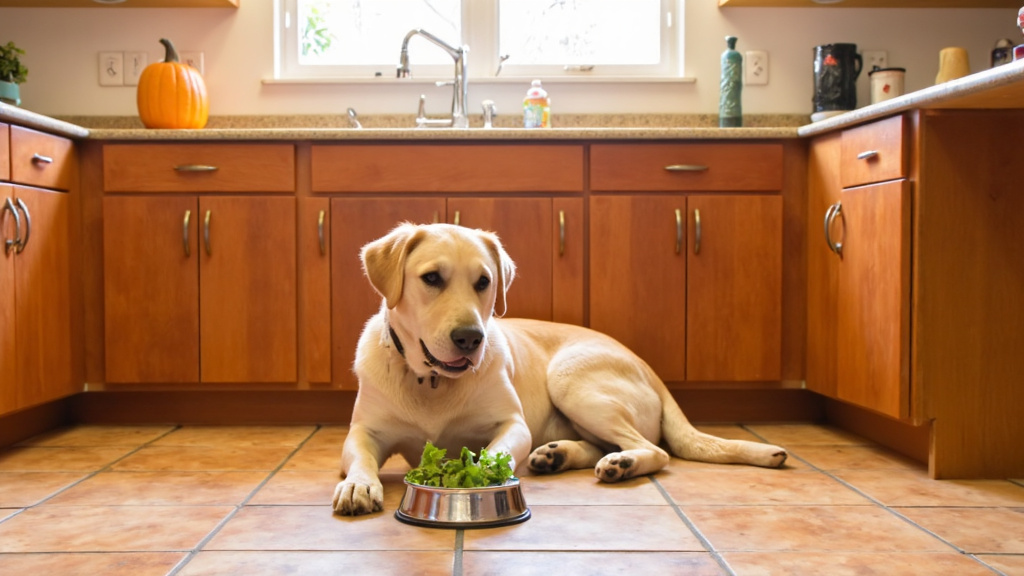
When your dog hasn’t pooped in a while, it’s concerning. For mild constipation cases, several home remedies can help restore normal bowel movements without an immediate veterinary visit.
Hydration: The First Line of Defense
Dehydration commonly causes canine constipation. Without adequate moisture, the colon absorbs excess water from waste, creating hard, dry stools that are difficult to pass.
Place multiple water bowls throughout your home to encourage drinking. Consider a pet fountain for dogs that prefer moving water, coconut water, or add low-sodium chicken or beef broth to increase appeal.
Dietary Adjustments That Work
Moisture-rich foods can provide quick relief while addressing hydration. Consider temporarily switching to canned food, which contains more moisture than kibble.
Pumpkin puree is highly effective for constipated dogs. Its fiber and moisture content help regulate bowel movements. Small dogs need 1 teaspoon per meal, medium dogs 1-2 tablespoons, and large dogs up to 4 tablespoons. Use only plain canned pumpkin, never pie filling.
Coconut oil acts as a stool softener and digestive lubricant. Add a teaspoon for small dogs or up to two tablespoons for large breeds to their food. Its anti-inflammatory properties also soothe the digestive system.
Natural Laxatives and Fiber Supplements
Psyllium husk forms a gel-like substance with water, softening stool and easing passage. Mix 1/2 teaspoon for small dogs or up to 2 teaspoons for larger breeds with wet food.
Olive oil lubricates the digestive tract. Use 1/2 teaspoon for small dogs or up to 1 teaspoon per 20 pounds of body weight to avoid causing diarrhea.
Steamed spinach, kale, or green beans provide beneficial fiber. Chop finely and mix with regular food to boost fiber intake.
Movement Matters: Exercise as Treatment
Physical activity stimulates peristalsis—the muscle contractions moving food through the digestive system. A 15-minute walk can help. For older or less mobile dogs, gentle clockwise belly massages can encourage digestion.
Regular exercise maintains healthy muscle tone in the abdomen and digestive tract, preventing future constipation. Consider an extra short walk during constipation episodes.
When Home Remedies Aren’t Enough
If your dog hasn’t had a bowel movement in over 48 hours despite these remedies, shows pain, has a distended abdomen, or is vomiting, contact your veterinarian immediately. These symptoms may indicate a serious blockage or health condition.
Chronic or recurring constipation might signal underlying issues like enlarged prostate, orthopedic problems, or neurological conditions affecting bowel function. These require proper veterinary diagnosis and treatment.
| Dog Size | Pumpkin Puree | Coconut Oil | Olive Oil |
| Small (under 15 lbs) | 1 tsp per meal | 1 tsp | 1/2 tsp |
| Medium (15-50 lbs) | 1-2 tbsp per meal | 1-2 tsp | 1 tsp |
| Large (over 50 lbs) | 2-4 tbsp per meal | 2 tbsp | 1 tsp per 20 lbs |
When Should You Take a Constipated Dog to the Vet?
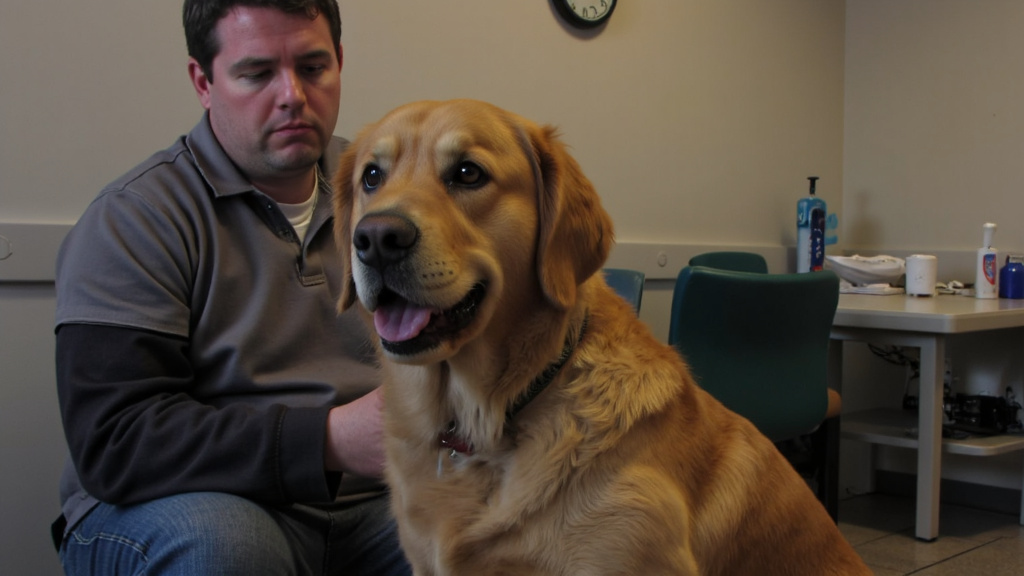
Dog constipation can range from a minor inconvenience to a serious medical emergency. While home remedies may help with mild cases, knowing when to seek professional help is crucial for your dog’s health and comfort.
Most mild constipation cases resolve with simple interventions, but certain situations require immediate veterinary attention. Watch for these warning signs:
Red Flag Symptoms Requiring Veterinary Care
Contact your veterinarian immediately if your dog shows any of these concerning symptoms:
- Prolonged constipation – No bowel movements for more than 48-72 hours
- Signs of pain – Whining, crying, or yelping when trying to defecate
- Blood in stool – Fresh red blood or dark, tarry stool
- Abdominal distension – Visibly swollen or hard belly
- Lethargy or weakness – Unusual tiredness or lack of energy
- Vomiting – Especially when accompanied by constipation
- Loss of appetite – Refusing to eat for more than 24 hours
- Straining without results – Repeated attempts to defecate with no success
Dr. Sara Ochoa, a practicing veterinarian, notes that “vomiting along with constipation may be indicative of a more serious issue, like an intestinal obstruction, that will need to be treated professionally.”
Serious Conditions That May Cause Constipation
Persistent constipation might signal more serious underlying health issues that require professional medical attention:
Intestinal obstruction – Dogs who have ingested foreign objects like toys, bones, or fabric may develop a blockage that prevents normal bowel movements. This is a potentially life-threatening emergency requiring immediate care.
Megacolon – This condition occurs when the colon becomes severely enlarged and loses its ability to contract properly. Without treatment, it can lead to obstipation, where the colon becomes too stretched to move stool through.
Neurological issues – Problems affecting the nerves that control bowel function can lead to chronic constipation that won’t respond to simple home remedies.
What to Expect at the Vet Visit
When you bring your dog to the vet, be prepared to provide these details:
- When you first noticed the constipation
- Any recent changes in diet, routine, or environment
- Your dog’s regular bowel movement patterns
- Current diet and feeding schedule
- Exercise routine
- Any medications your dog takes
- Access to potential foreign objects or toxins
Your veterinarian will perform a physical examination, including palpating your dog’s abdomen to check for pain, masses, or impacted stool. They may recommend:
- Abdominal X-rays to look for blockages or an enlarged colon
- Blood tests to check for underlying health conditions
- Ultrasound to evaluate internal organs
Treatment may include enemas, intravenous fluids for dehydration, and medications to stimulate bowel movements. Severe cases might require hospitalization or surgery.
Trust your instincts. If you sense something is seriously wrong, seek veterinary care even if symptoms seem mild. Early intervention can prevent complications and reduce your dog’s discomfort.
Veterinary costs for constipation treatment vary widely. A simple visit requiring an enema may cost $100-$200, while severe cases needing surgery could cost several thousand dollars.
While home remedies might seem appealing, veterinary care is the safest approach when your dog shows significant discomfort or when constipation persists.
Supporting Your Dog’s Digestive Comfort and Wellbeing
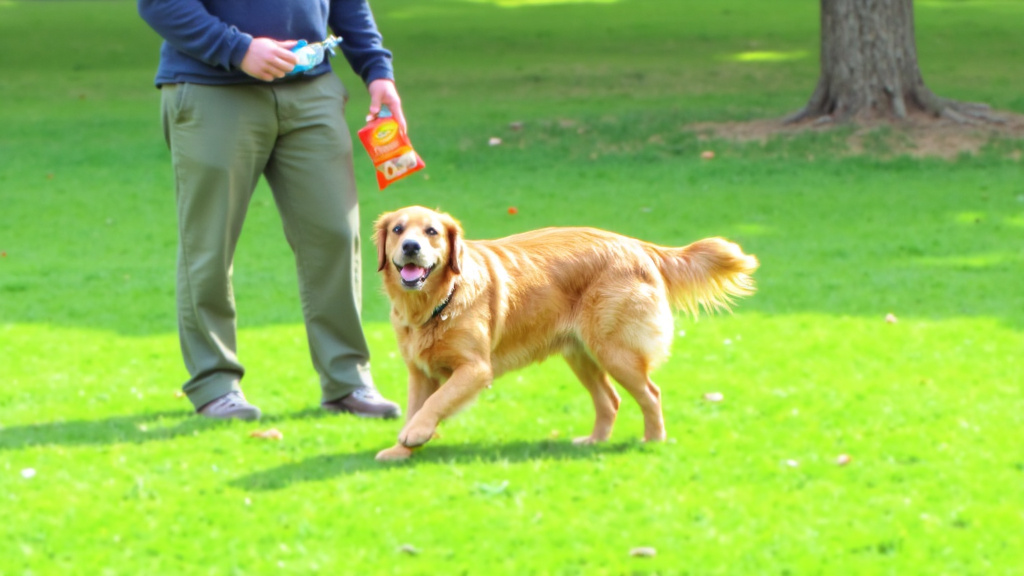
Maintaining your dog’s digestive health requires building daily habits that prevent issues like constipation. Regular exercise, proper hydration, and balanced nutrition promote healthy bowel movements and overall comfort. Staying attuned to your dog’s routines and noticing subtle changes enables early intervention when digestive issues arise.
Supportive tools can enhance these proactive measures. The Halo Collar helps monitor and encourage regular outdoor activity by enabling safe, secure walks that naturally promote healthy digestion. Combined with attentive home care and regular veterinary consultation, these approaches help maintain your dog’s digestive wellness and overall health.
For more insights on keeping your dog healthy from nose to tail, explore our Dog Health page.

